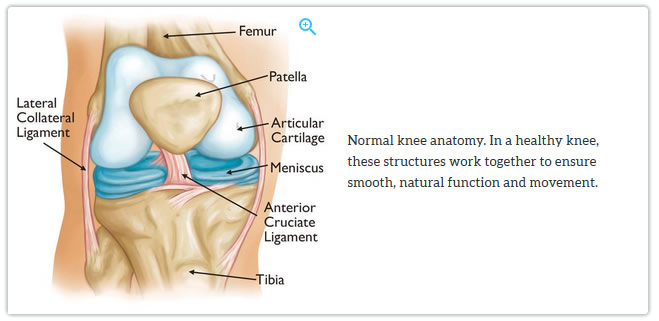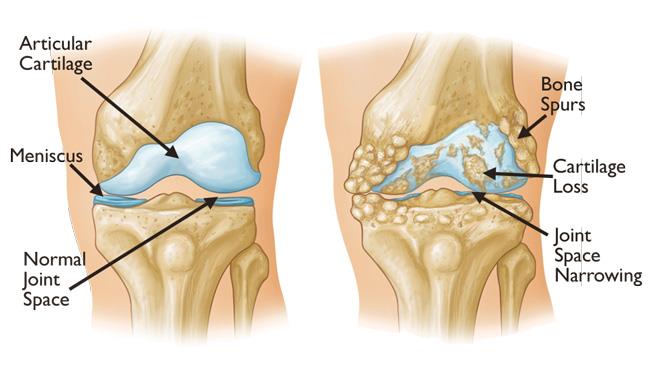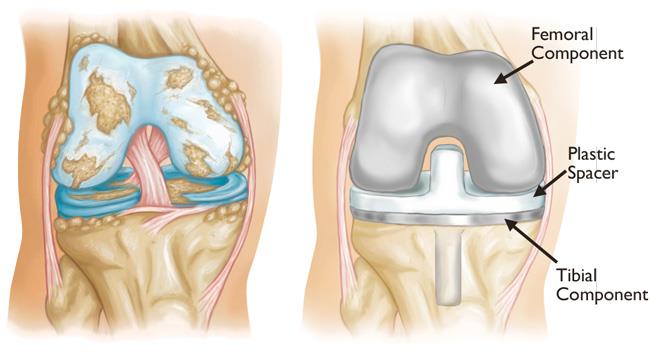Knee replacement is surgery for people with severe knee damage. Knee replacement can relieve pain and allow you to be more active. Your doctor may recommend it if you have knee pain and medicine and other treatments are not helping you anymore.
When you have a total knee replacement, the surgeon removes damaged cartilage and bone from the surface of your knee joint and replaces them with a man-made surface of metal and plastic. In a partial knee replacement, the surgeon only replaces one part of your knee joint. The surgery can cause scarring, blood clots, and, rarely, infections. After a knee replacement, you will no longer be able to do certain activities, such as jogging and high-impact sports.



